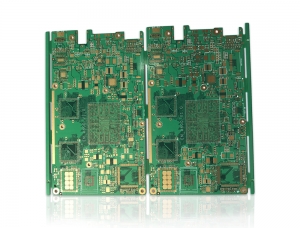What are the best welding methods for Jiangmen PCB
The best welding method of PCB
1. Stannous action
When the hot liquid solder dissolves and penetrates into the surface of the metal to be welded, it is called metal tin or metal tin. The molecular composition of the mixture of solder and copper is a new part of copper, and part of it is an alloy of solder. This kind of solvent action is called tin dipping. It forms intermolecular bond between various parts, and generates a kind of metal alloy eutectic. The excellent intermolecular bond is the center of the welding process, which determines the strength and quality of the welding point. As long as the surface of copper is free from pollution and the oxide film formed due to exposure to the air is not stained with tin, and the soldering tin and operation surface need to reach the appropriate temperature.
2 external tension
We are all familiar with the surface tension of water, which makes the cold water drop on the greased metal plate stick to the ball, because in this case, the adhesion that makes the liquid on the surface of the solid tend to disperse is less than its cohesion. Use warm water and detergent to reduce the surface tension. Water will infiltrate the greased metal plate and flow out to form a thin layer. If the adhesion is greater than the cohesion, this situation will occur.
The cohesive force of tin lead solder is even greater than that of water, which makes the solder look like a sphere, so as to minimize its outer surface product (under the same volume condition, the sphere has the smallest outer surface product compared with other geometric shapes, so as to meet the needs of the lowest energy state). The effect of flux is similar to that of detergent on metal plates coated with grease. In addition, the surface tension is highly dependent on the surface cleanliness and temperature. Only when the adhesion energy is much greater than the surface energy (cohesion), can the ideal tin staining occur.
The occurrence of 3-metal alloy eutectic
The intergranular bond between copper and tin forms grains, whose shape and size depend on the duration and strength of temperature during welding. Less heat during welding can form a precise crystal structure and a good welding point with the best strength. Too long reaction time, whether due to too long welding time, too high temperature or both, will lead to rough crystal structure, which is Sandy and brittle, with small shear strength.
Copper is used as the metal substrate, tin lead is used as the solder alloy, lead and copper will not form any metal alloy copolyester, but tin can penetrate into copper, and the intermolecular bond between tin and copper forms the metal alloy copolyester cu3sn and Cu6Sn5 on the connection surface of solder and metal.

It is necessary to make the metal alloy layer (N phase + ε phase) very thin. In laser welding, the thickness of the metal alloy layer is 0.1M m. In wave soldering and manual soldering, the thickness of the inter metal bond of the excellent welding points is more than 0.5 μ M. Because the shear strength of the welding point decreases with the increase of the thickness of the metal alloy layer, it is often tried to keep the thickness of the metal alloy layer below 1 μ m, which can be completed by making the welding time as short as possible.
The thickness of the eutectic layer of metal alloy depends on the temperature and time of forming the welding point. Ideally, the welding should be completed within about 2 s of 220 't. under this condition, the chemical dispersion reaction of copper and tin will take place. The thickness of Cu 3Sn and Cu 6sn 5 is about 0.5 μ M. Inadequate metal to metal bonding is common in cold welded joints or welded joints that do not rise to the proper temperature during welding, which may lead to blocking of the welding surface. On the contrary, too thick metal alloy layer, which is common in over heated or too long welded joints, will lead to very weak tensile strength of welded joints.
4 tin angle
When the temperature of eutectic point is about 35 ℃ higher than that of solder, when a drop of solder is placed on the hot surface coated with flux, it forms a meniscus. To some extent, the ability of tin on the surface of metal can be evaluated by the shape of meniscus. If there is an obvious undercut on the meniscus of the solder, such as the water drop on the greased metal plate, or even tends to be spherical, the metal is not weldable. As long as the meniscus is stretched to a value less than 30. It's the small angle that makes welding outstanding.
Article source: Jiangmen printed circuit board http://www.fartai.com/